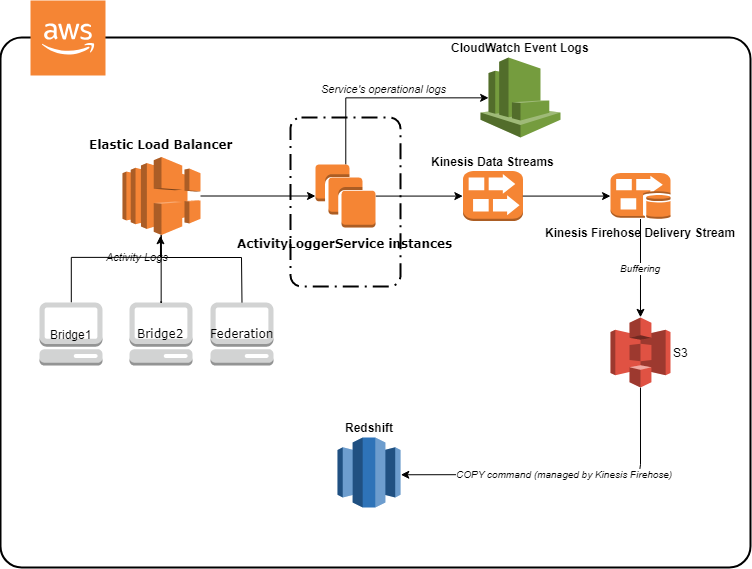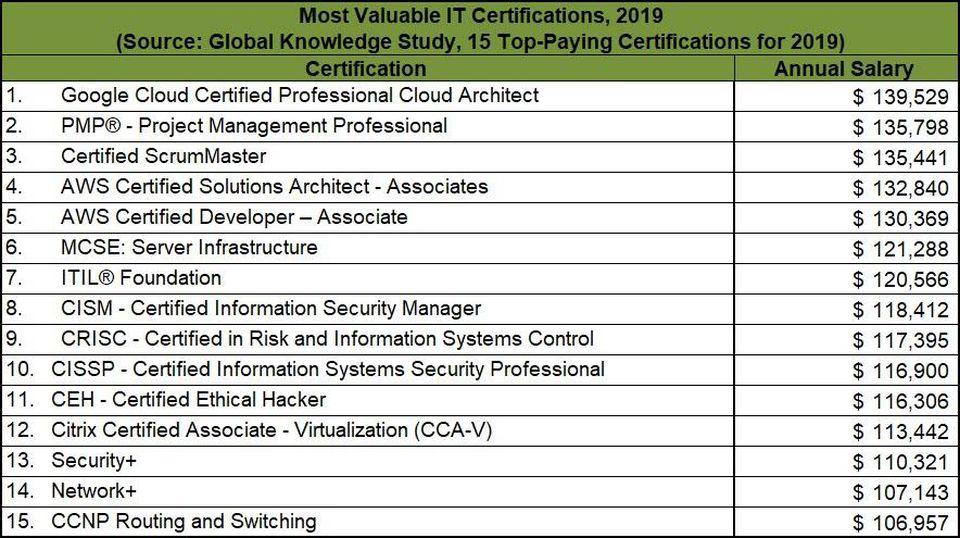About axes and cabbage
Reflections on where the desire to surrender certification AWS Solutions Architect Associate .
The first motive: "Axes"
One of the “Know your tools” principles that is most useful for any professional (or in one of the variations of “ sharpening saw ”).
We have been in the clouds for a long time, but for the time being, these were just monolithic applications with bases deployed on EC2 instances — cheap and good.
')
But gradually we became crowded within the monolith. We took the course to cut in a good way - to modularization, and then modern microservices. And a hundred flowers bloom very quickly on this soil.
What is there to go far - the activity logging project, which I now lead, includes:
- Clients in the form of various applications of our product - from remote corners of the dense Legacy to ultra-modern microservices on .Net Core.
- Amazon SQS queues in which logs about what is happening with customers.
- Microservice on .Net Core, which pulls messages from the queue and sends them to Amazon Kinesis Data Streams (KDS). It also has a Web API interface and a swagger UI as a duplicate channel for manual testing. It is wrapped in a Docker linux container and hosted by Amazon ECS. Provides autoscaling in case of a large flow of logs.
- From KDS, fire hose data is sent to Amazon Redshift with intermediate warehouses in Amazon S3.
- Operational logs for developers (debugging information, error messages, etc.) are formatted into nice JSON and sent to Amazon CloudWatch Logs

Working with such a zoo of AWS services, I want to know what is in the arsenal and how it is better to use something.
Just imagine - you have an old proven ax that cuts trees well and nails well. Over the years, you have learned how to handle him well, put together a doghouse, a couple of sheds, and maybe even a hut. Sometimes there are difficulties, for example, to tighten the screw with an ax is not always possible quickly, but usually solved with the help of patience and such and such mother.
And then a wealthy neighbor appears next to him, who has a hell of a variety of tools: electric saws, nails, screwdrivers, and God knows what else. He is ready to rent all this wealth around the clock. What to do? Option to take an ax and dispossess we dismiss as a political illiterate. It would be most reasonable to study what kind of tools are there, how they can complement each other at different jobs and on what conditions they give up.
Since for me this was the main motive, the preparation was built accordingly - to find a fundamental guide and study it carefully. And such a guide was found . The book is written dryly, but it is unlikely to scare away people who have taught Fichtenholz mat.
I read it from cover to cover and I believe that it fully meets the goal set - it gives a good overview of both the services proper and the more general concepts that can be encountered during the exam. In addition, a pleasant bonus is the opportunity to go through a somewhat odd registration procedure at Sybex and answer all verification questions and test exams from the online book.
Important point: I studied on the book of 2016 edition, but in AWS everything changes quite dynamically, so look for the freshest edition that will be at the time of preparation. For example, in trial tests frequently there are questions about the availability and durability of various classes S3 and Glacier, but some of the numbers have changed compared to 2016. In addition, new ones have been added (for example, INTELLIGENT_TIERING or ONEZONE_IA).
The second motif: "65 shades of orange"
Tense thinking requires some effort. But it's not a secret that many programmers experience masochistic pleasure from puzzling tasks, questions, and sometimes even exams.
I think this pleasure is in many ways akin to the game “What? Where? When? Or, say, a good game of chess.
In this sense, the current AWS Solutions Architect Associate exam is very good. Although during the preparation, among the test questions from time to time there were “hinged”, such as “ How many maximum elastic IP addresses can I have in a VPC ” or “ What is the availability S3 IA? ", On the exam itself did not come across such. In fact, almost every one of the 65 questions was a mini-design task. Here is a rather typical example from the official documentation:
A web application allows customers to upload orders to an S3 bucket. The resulting Amazon S3 events trigger a Lambda function that inserts a message to an SQS queue. DynamoDB table partitioned by unique order ID. This is a number of solutions for architects and scaling problems. What is the most important thing to do?
A. Lambda function B. SQS queue C. EC2 instance D. DynamoDB table
As far as I know, the last version of the exam contained 55 questions and 80 minutes were allocated for it. Apparently, they have done a good job on him: now there are 65 questions and 130 minutes for them. The time in terms of the question has increased, but there are practically no passing questions. Over each had to think, sometimes more than two minutes.
By the way, there is a practical conclusion from here. Usually the winning tactic is to quickly run through all the questions and answer what is answered immediately. In the case of SAA-C01, this in general does not work, practically every question will have to be checked with the checkboxes, otherwise there is a risk not to notice any detail and answer incorrectly. In the end, I answered, spending a minute or two on each question, and then returned to the start-up and spent the remaining 20 minutes on them.
The third motive: "If youth knew, if old age could"
As you know, one of the most frequent causes of failures, which programmers get for 40, is a reduced ability to learn compared to young people.
Meanwhile, there is a feeling that in some areas my ability to learn has even improved compared with my student years - due to greater diligence, and experience that allows you to attract familiar analogies for unfamiliar questions.
But the feeling can be deceptive, you need an objective criterion. Preparing for the exam and pass it - what is not an option?
I believe that the check was a success. I was preparing myself and the training went quite smoothly. Well, yes, a couple of times I fell asleep in a hammock reading a manual, - but this can happen to anyone.
Now there is a certificate and decent points for the exam as a sign of gunpowder in the flasks.
Well, a little about what may be a motivation, but it was unlikely in my case.
Not the first motive: "Cabbage"
There are curious studies of “Forbes” about specialists with which certificates are the most paid in the world, and AWS SAA is in the 4th place there

But, first, what is the reason, and what is the consequence? I suspect that guys earn good money
because of certain abilities, and these same abilities help pass certification. Secondly, they are plagued by vague doubts that someone will be paid $ 130 K per year outside the United States, even though he is observable from head to toe.
On the whole, as is known, after the satisfaction of the lower levels of the pyramid, wages cease to be the main factor.
Not the second motive: "Company Requirements"
Companies can encourage or even demand certification (especially if they are needed for a partnership, for example, to join AWS APN in the case of Amazon).
But in our case, an independent product is produced, in addition, we try to avoid vendor lock-in. So no one requires certificates. They will praise and pay for the exam in recognition of certain efforts - that’s the whole official post.
No third motive: "Employment"
Perhaps the availability of certificates will be a definite plus for getting a job, all other things being equal. But I have no plans to change jobs. It is interesting to work on a complex product that actively uses many new-fangled approaches and AWS services. All this is enough at the present place.
No, of course, there are different cases: in 23 years I changed work in IT 5 times. It’s not a fact that I don’t have to change again if I’ve been stretched for another 20 years. But they’ll beat - we will cry.
Useful
In conclusion, I will mention a few more materials that I used in the process of preparing for the exam and simply as a "sharpening saw":
- Video courses pluralsight and cloud guru . The latter, they say, are especially good if you buy a subscription with access to all test exams. But as one of the conditions of the game, I didn’t have to spend a single cent on the preparation, the subscription purchase didn’t fit well with that. In addition, I generally find the video format less dense in terms of the amount of information per unit of time. However, when they prepare for SA Professional, then most likely I will issue a subscription.
- Tons of Amazon official documentation, including FAQ and WhitePapers.
- Well, the last, but significant thing - the verification tests . I found them a couple of days before the exam and worked out well. There is nothing to read, but the online interface and comments to the answers are good.
Source: https://habr.com/ru/post/453390/
All Articles